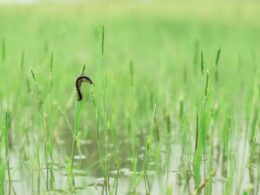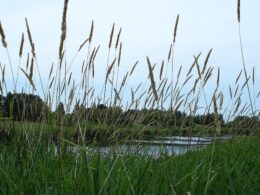Flame Grass Basic Information
Flame grass is an ornamental perennial grass that is prized for its vibrant red coloration. Growing up to three feet tall, this versatile plant can be used in gardens, borders, and as a standalone ornamental feature.
Flame Grass Appearance
Flame grass is a beautiful ornamental plant that is prized for its striking appearance, since it turns its foliage color to reddish in early fall. With feathery, pinkish-purple foliage and long silky, reddish-brown flowers, it makes a striking addition to any garden or landscape. The flat and pointed leaves are dense and form large clumps, and the tall flower stalks can reach up to 4.5 feet in height.
Flame Grass Habitat and Distribution
Flame grass, or Miscanthus sinensis purpurascens, is a versatile perennial that is native to the wetlands and riverbanks of China, Japan, and Korea. Despite its origins in these regions, flame grass has adapted well to a variety of different climates, growing and blooming readily across temperate regions around the world.
Flame Grass Care
Flame grass is a beautiful and hardy ornamental grass that requires very little care in order to thrive. This plant is incredibly resilient to colder temperatures.
Watering Requirements
Flame grass will go dormant if it does not receive enough moisture. For best results, flame grass should be watered deeply and allowed to dry out somewhat between watering.
Pruning
Pruning is an important part of caring for flame grass. When pruning, be sure to remove any dead or damaged leaves, as well as any stems that are more than three years old. Also, be sure to leave at least a foot of stem on each plant so that it can regrow properly.
Soil
Flame grass prefers soils that are well-drained and moist. In addition, the pH of the soil should sit in the range between 6.5 and 7.0. Unfortunately, flame grass does not tolerate acidic or alkaline soils very well, so additional care must be taken when preparing the planting bed for this plant.
Temperature
This plant thrives in mild temperatures, making it perfect for gardens on the coast, or other areas where summers are mild. In order to get the best growth out of flame grass, it’s important to provide plenty of light – at least 4 hours of full sun per day. The USDA hardiness zone for flame grass is from 4 to 8.
Common Problems
A common problem for this plant is poor drainage. If the soil around the plant stays too wet, it can lead to fungal diseases such as powdery mildew. Flame grass also prefers full sun, but too much direct sunlight can scorch the leaves. Generally speaking, the plant is pests and disease free and with proper care it can be a beautiful addition to any garden.
How to Propagate Flame Grass?
The most common propagation methods are by seed and by division. When propagating by seed, it is best to sow fresh seeds directly into the soil in either spring or summer. Alternatively, propagation by division involves breaking up clumps of flame grass plants into smaller segments and then replanting them at regular intervals along a garden bed or another designated area.



















